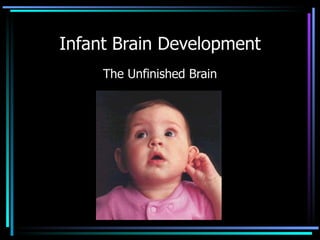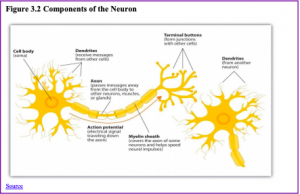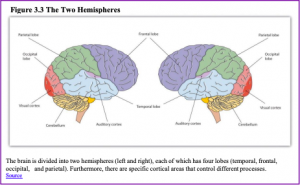Describe Brain Development During Infancy and Toddlerhood
Each child grows and develops at his or her own rate. As a parent there are 5 easy steps you can take to promote healthy baby brain development during the first 3 crucial years of their life.

Physical Growth And Brain Development In Infancy Lifespan Development
Early Postnatal Neurobiological Development.

. Year two is an even more exciting time for you and your baby as they begin to form more complex cognitive abilities. 5 Crucial steps for healthy baby brain development. Read together Its not rocket science to know that reading to your child helps their brain develop crucial social and communication skills.
At just three years old your childs brain will be about 80 the size of an adult brain. During their first year babies develop at an amazing rate quickly gaining motor language and visual skills. Infants change and grow so much that it is probably not surprising to learn that a babys brain doubles in size from birth to age three.
By recognizing developmental delays during infancy or toddlerhood early intervention may be more effective than if the delays are not acknowledged until later in childhood. Incredibly it doubles in size in the first year. The brain is the command center of the human body.
Between 2 to 6 months a baby will learn about emotions through watching how you react to them when they coo cry smile or yell. Healthy physical development is dependent on adequate nutrition brain development the central nervous system muscles bones and the interactions and experiences offered to infants and toddlers. The network of synapses grows rapidly during the first year and continues to do so during toddlerhood.
Most of the brains cells are formed before birth but most of the connections among cells are made during infancy and early childhood. Early in development the brain grows faster than any other organ of the body. This early brain development is important because it is the groundwork for the childs future learning to be built on.
Describe brain development during infancy and toddlerhood current methods of measuring brain functioning and appropriate stimulation to support the brains potential. A babys brain begins developing before birth and in the early years significant wiring occurs within the brain effectively programming the childs development. An account of brain development in the early years of childhood is only complete if we first examine the origins of this process during the prenatal months.
Brain development is a protracted process that begins about 2 weeks after conception and continues into young adulthood 20 years later. The most dramatic change in your baby will be their spike in language abilities. 90 of Brain Growth Happens Before Kindergarten At birth the average babys brain is about a quarter of the size of the average adult brain.
Development between birth and 30 months. Early experience and interaction with the environment is critical in a childs brain development. Life experience will activate certain neurons create new connections between neurons and strengthen existing connections called myelination.
Development in Infancy and Childhood In utero the brain develops rapidly and an infant is born with essentially all of the nerve cells it will ever have. Between 6 and 12 months of age your baby will learn about new tastes and textures with healthy solid food but breast milk should still be an important source of nutrition. This period of rapid neural growth is referred to as Synaptic Blooming.
One of the most prominent characteristics of human brain development is synaptic pruning. It keeps growing to about 80 of adult size by age 3 and 90 nearly full grown by age 5. Early in development the brain grows faster than any other organ of the body.
Brain development is particularly rapid during the third trimester. Describe brain development during infancy and toddlerhood current methods of measuring brain functioning and appropriate stimulation to support the brains potential. Early in your childs life they will start to form synapses at a faster rate than at any other time of life.
Feed your baby slowly and patiently encourage your baby to try new tastes but without force and watch closely to see if hes still hungry. Young brains are built through serve-and-return interactions the Center explains. Special attention is also paid to several issues that are particularly important during infancy and toddlerhood particularly.
Synaptogenesis or the formation of connections between neurons connections between neurons are synapses continues from the prenatal period forming thousands of new connections during infancy and toddlerhood. Though many brain patterning processes are complete at birth the human brain exhibits further dramatic biological development during the preschool years and roughly quadruples in weight before the age of six Dobbing and Sands 1973 when it has acquired approximately 90 of its adult volume Courchesne et al 2000. It not only helps them develop a.
This serves the dual purpose of helping the head fit through the birth canal and allowing room for the brain to grow quickly during early childhood. However after birth neural connections must form in order for the newborn ultimately to walk talk and remember. A 3-year-old toddlers brain is twice as active as an adults brain.
Specific suggestions for how adults can positively influence childrens development are offered. When an infant or young child babbles gestures or cries and an adult responds appropriately with eye contact words or a hug neural connections are built and strengthened in the childs brain that support the development of communication and social skills. If children do not develop.

Chapter 10 Physical Development In Infancy Toddlerhood Human Behavior And The Social Environment I

Chapter 10 Physical Development In Infancy Toddlerhood Human Behavior And The Social Environment I

Comments
Post a Comment